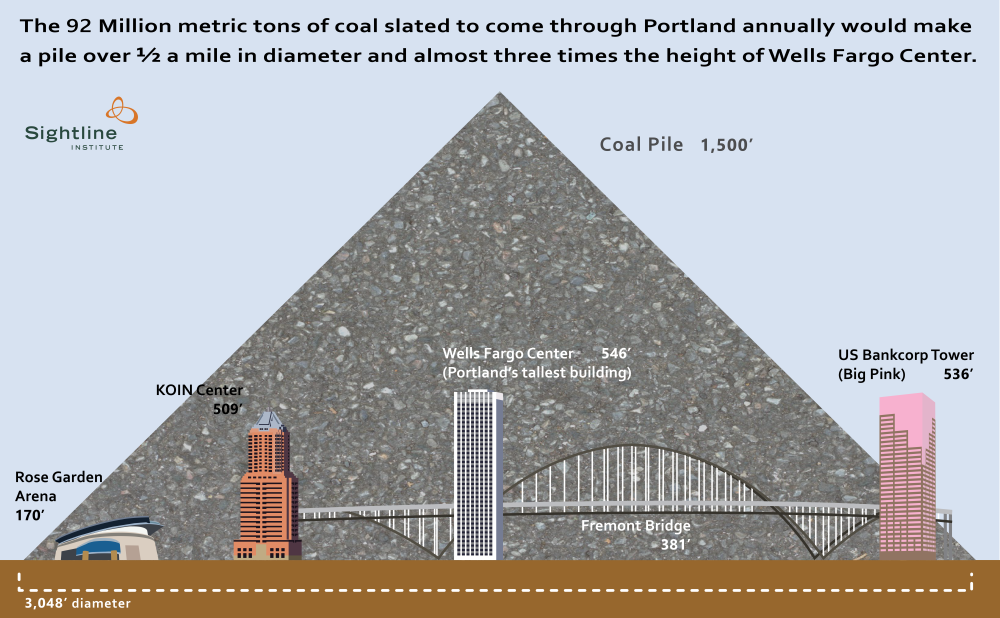In 2016, the Northwest public will have a chance to voice its views on the two remaining coal export terminals proposed for Washington state. These projects would be the first and second largest coal terminals in North America, weighing in at 48 million tons per year (in Whatcom County) and 44 million tons annually (in Longview).
That sounds like a lot of coal… because it is.
All of that coal would be delivered by trains traveling through the scenic Columbia River Gorge and near Portland, Oregon, on their way to the planned terminals. So for comparison purposes, here’s how one year’s worth of coal would dwarf the biggest buildings in Portland:

Original Sightline Institute graphic, available under our free use policy.
Even considering just the smaller of the two projects alone, the sheer quantity of coal is staggering:

Original Sightline Institute graphic, available under our free use policy.
Here’s how that coal would look stack up in the Columbia River Gorge:

Original Sightline Institute graphic, available under our free use policy.
And here’s how just one of the two projects would look:

Original Sightline Institute graphic, available under our free use policy.
In the last several years, the Northwest’s “Thin Green Line” of resistance successfully halted four of the six coal export projects originally proposed for the region. As the public evaluates these final—and by far largest—two coal schemes, it’s useful to remember just how big the coal industry’s ambitions are.
Sightline thanks Devin Porter at Goodmeasures.biz for designing these graphics.









Suzanna
I lived in Vancouver while the shape/tar sands trains were running heavy traffic and opposed the industry’s desire to build a terminal. That was based on very clear dangers in spillage and it’s high volatility compared to lighter drilled crude as well as documented wrecks/tragedies across the country.
Other than the sheer volume, what are the specific impact concerns?